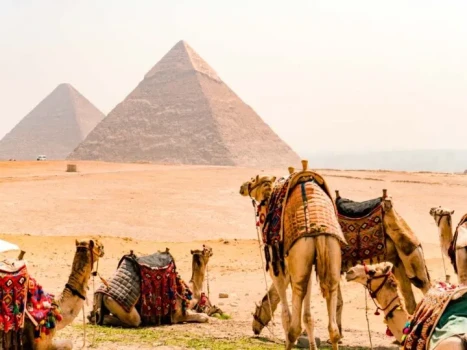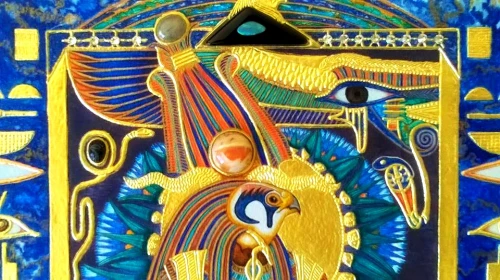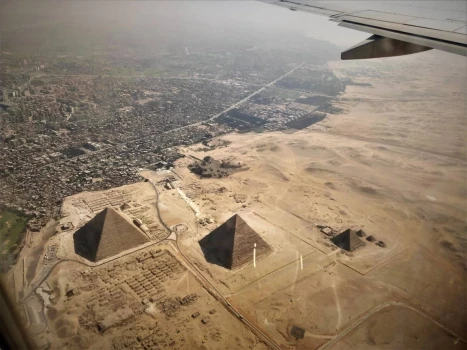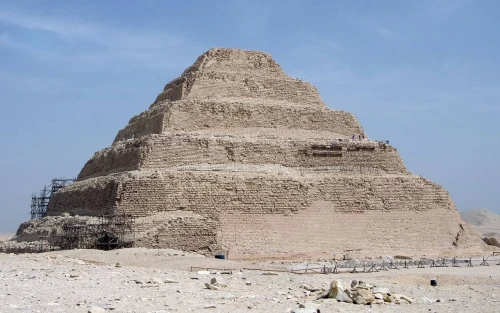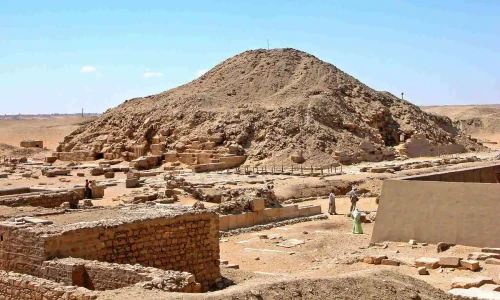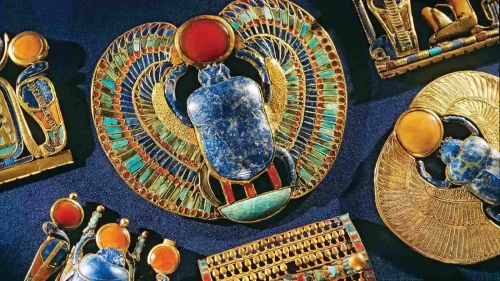
In Egyptian mythology, colours were commonly used as symbols to represent the gods. Egyptians created great works of art to embellish their homes, gardens, palaces, and tombs as a way to express their appreciation to the gods for their blessings and to bring vivid colour to these depictions. The palace of Amenhotep III at Malkata (1386–1353 BCE) was extensively embellished with murals and other decorations. The palace's interior walls were painted blue, yellow, and green, while the front walls were painted white. These colours weren't chosen at random; rather, they were intended to convey the importance that each had to the Egyptians.
Black
The cemetery was known as "the black one," as was the mummy OSIRIS, who served as the ruler of the Netherworld. Death is associated with the colour black, which is not a natural hue but rather the absence of light. Black was the colour of the funerary gods ANUBIS and Khenty-Amentu, who were shown as jackals wearing black coats.
Blue
Blue was thought to represent the sky, the universe, and infinity. AMUN was occasionally depicted as blue to serve as a reminder of his relationship to the cosmos. Ancient Egyptians preferred to wear amulets made of blue faience, just as the gods favoured donning blue beards, wigs, and crowns.
Gold
"The skin of the gods," or gold, was the celestial metal that never tarnished and symbolised eternal life in the afterlife.
Green
The colour green symbolised vitality, rebirth, regeneration, and greenery. The name "The Great Green" belonged to OSIRIS, the deity of resurrection. Green denoted positive outcomes. The name for the sacred eye makeup, which was made from green malachite and adorned both priests and the deity sculptures, was joy.
Red
Red was a colour that could be both good and bad. Red was frequently the hue of choice for magical amulets like the TET because it stood for life, vigour, and triumph. To guarantee that the monarch in the afterlife had access to only the best bread, a prayer in the PYRAMID TEXTS asks, "Let my bread be made of red grain." Red, however, was also the hue of the desert, a lifeless wasteland believed to be the home of the god SET and the forces of evil. The opposite of doing "green" or positive things was to do "red things," which were dreadful. A "red heart" was a statement of passion, and red was the colour of anger.
White
White, the absence of colour, stood for holiness and purity and was used to create the respected moniker "the white wall" for MEMPHIS. During religious rituals, "white ointments" and "white sandals" were mentioned. The priests who worked in the temples were dressed in white linen, as were the statues of the gods.
 English
English
 Spain
Spain

